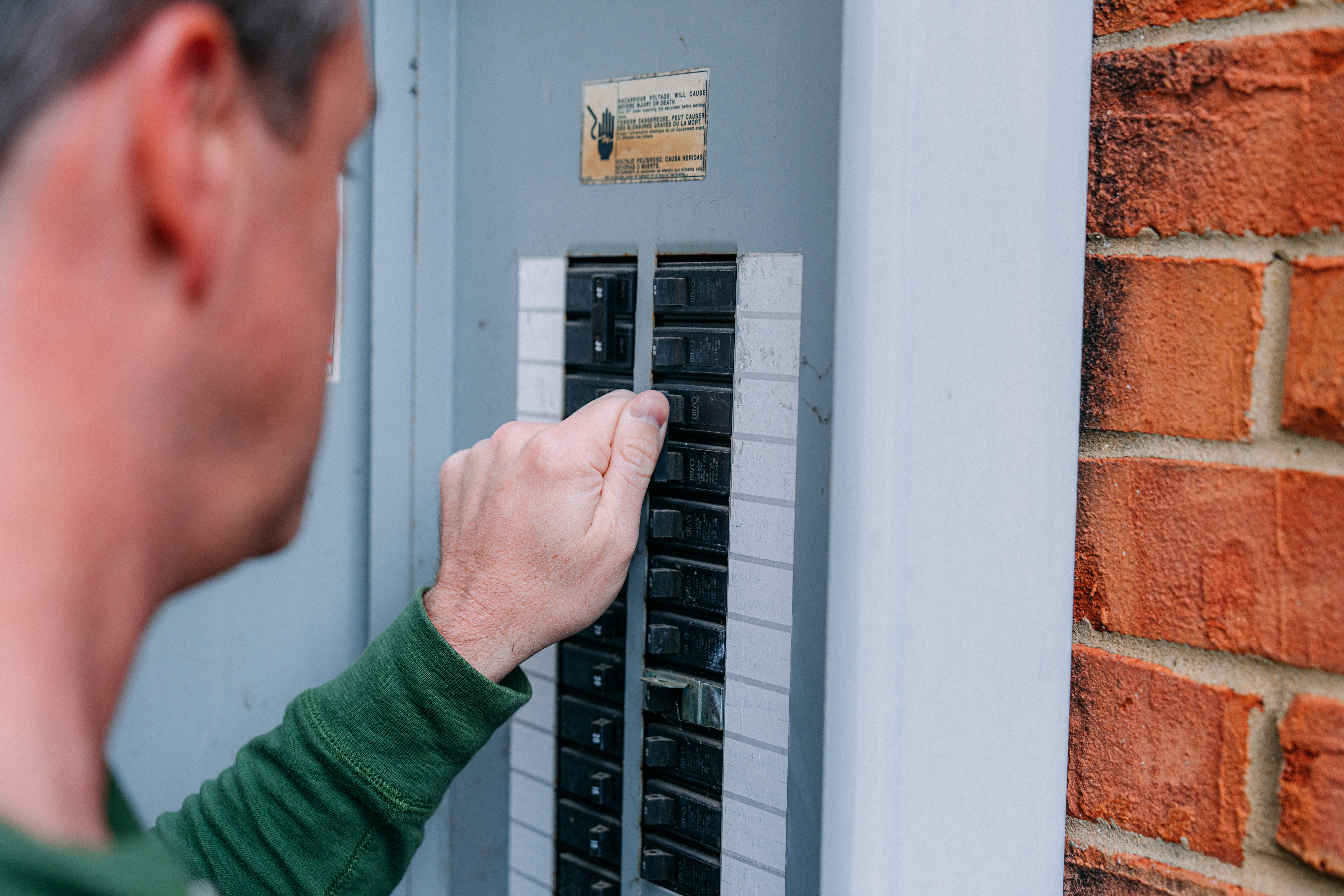
How much does electrical box replacement cost in Columbus, Ohio? Learn why this city may be more affordable and what factors the price.
Run power to any outdoor space


If you’re tired of fumbling around in a dark garage or would love some lighting in the backyard, it might be time to invest in outdoor power. Running conduit through an exterior wall can be a project for DIY-savvy homeowners. Though the project may take up most of your day, the payoff is huge when you don't have to worry about blindly navigating outdoor spaces.
Whether you’re installing an electrical outlet for an outdoor kitchen or trying to light up the garage, map out a clear plan for installation before starting. Not only will this information be useful for your project, but it may be required to obtain a permit.
A few weeks before you begin your project, contact your local building department to ask if a permit is necessary, and if so, apply to obtain an electrical permit. In most cases, any changes you make to the electrical system in your home, such as running conduit outside, require an electrical permit. On the day of installation, review your plan thoroughly before you begin.
At the service panel, turn off the circuit breaker. Using a non-contact voltage tester, verify that the circuit is off. If any voltage is detected, turn off breakers until you get a clear reading.
Install a cable connector in the junction box for the new connection. Install another one in the device box where you will connect the new cable.
Use a stud finder between the device and junction boxes to mark the studs. Verify the path for the conduit. You want to ensure the planned path is feasible for the installation before you start.
Use a drill bit that will appropriately create the right size hole for the conduit to fit through and drill the hole. You want the conduit to fit through the hole without fitting too loosely or too tightly.

Using a hacksaw, cut the conduit to the length needed for the installation. Bend the conduit using a conduit bender. For non-flexible conduits, you can use 90- and 45-degree angle fittings and connect them to the straight sections of the conduit.
If the conduit is flexible, you don’t need to shape it and won't need a bender. When you’re done shaping the conduit, confirm the size of the hole and make any necessary adjustments.
Before sliding the conduit into the hole, verify that no water is present. If you are placing the conduit near water, you will need to add a GFCI breaker to ensure the integrity of the conduit.
As you slide the conduit in, you will likely need an ell puller to help insert it at a 90-degree angle. The "L" represents the 90-degree angle on an ell puller, while the second letter denotes the exit point direction. LB fittings are for back conduit fittings, LR is for right conduit fittings, and LL is for left conduit fittings. These fittings will make it easier to slide the conduit in.
When the conduit is in place, you will attach conduit hangers for support. The first hanger should be 3 feet away from the junction box and any subsequent hangers will measure 10 feet apart. Measure where the hangers will go and then attach them with a screw. For hangers going in areas without a stud, use drywall anchors.
Using fish tape, pull the cable through the conduit. You can use other methods to pull the wire through, including a string or conduit mouse, but fish tape works best on conduits with angles and curves.
Once you pull the cable through, cut it so it extends at least 8 inches from the front of the junction box and the device box. Use a utility knife or cable ripper to take off the outer jacket on the ends of the cable. Hold the stripped ends with the connecting wires at each box, and complete the connection with a wire nut. Replace the covers on each box before turning on the circuit breakers and testing the connection.

If any gaps appear between the conduit and the hole in the wall, seal them with silicone caulk.
While this step is optional, you will need to dig a trench if you plan to put your wire underground. The cost of digging a trench can run upwards of $2,000, and it will be a more in-depth project.
Handling any big project that deals with electrical installation is not a task for a new DIYer. If you consider yourself to be a seasoned DIY expert or have experience with electrical projects, you may do well handling this project on your own. For homeowners with little experience, it's a much safer option to hire a local electrician to handle running electrical wire to an outside wall.
From average costs to expert advice, get all the answers you need to get your job done.

How much does electrical box replacement cost in Columbus, Ohio? Learn why this city may be more affordable and what factors the price.

How much does adding an electrical outlet cost in Columbus? Get details on average pricing, permit needs, and what affects the total cost.

How much does rewire house cost in Columbus? Learn the major factors that impact the price and how it can help increase your home's value.

If your circuit breakers are shutting off, it may be time to upgrade your electrical panel and wiring to 200-amp service. Here's what's involved with upgrading to a 200-amp service so you can safely meet your home's electrical demand.

A dead outlet is more than an annoyance. It can be a fire hazard, too. Here’s how to deal with a dead outlet to keep your home safe and prevent fire.

Wondering who to call for a fast and easy lamppost installation? Our guide covers who should install a lamppost and the general cost for this project.